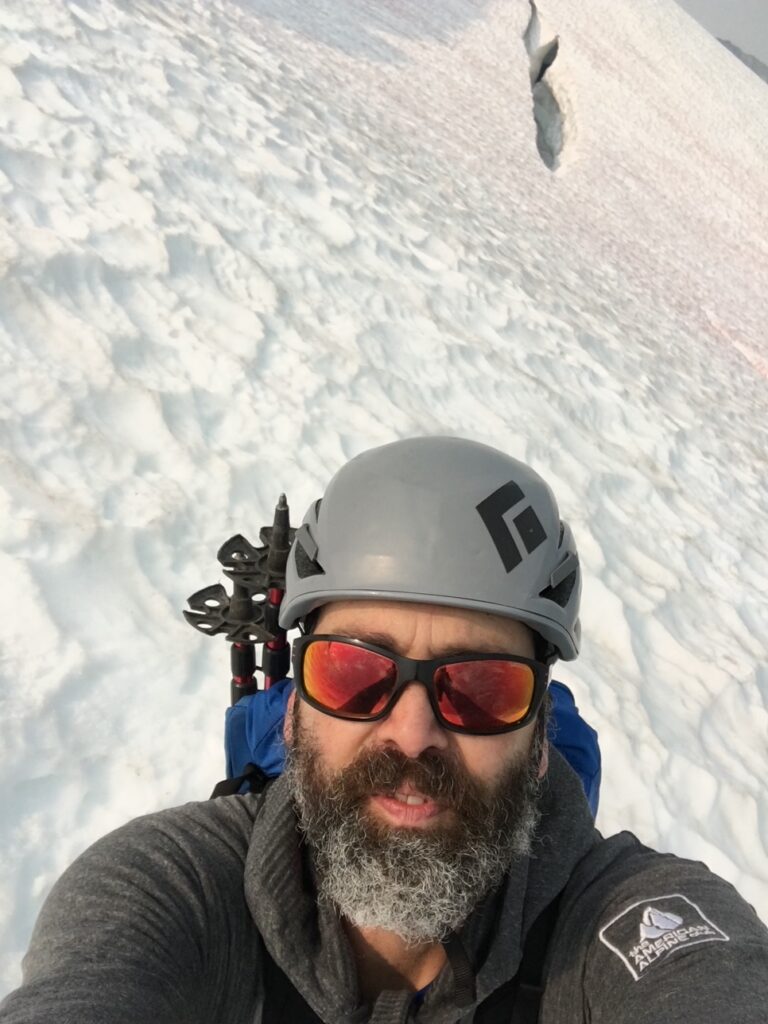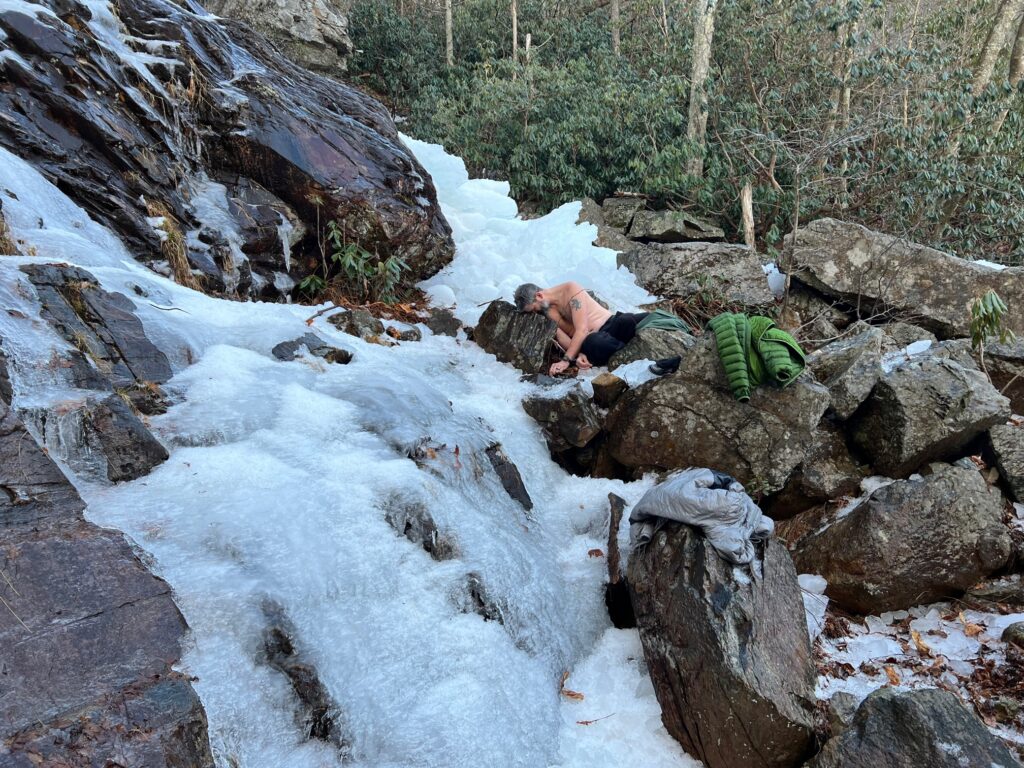Hypothermia is deadly. There, I said it! This potentially dangerous drop in body temperature is commonly defined as a core body temperature below 95 degrees Fahrenheit (35 degrees Celsius) after dropping from a healthy temperature of about 98.6 degrees Fahrenheit or 37 degrees Celsius.
The slightest variance from the “normal” range can disrupt the body’s ideal operating conditions, known as homeostasis. The negative impact of hypothermia on homeostasis is dramatic and therefore should not be underestimated. Hypothermic progression follows a path, moving first more slowly, then more rapidly toward non-movement and when properly treated, onto death.

Movement is life. Living things grow, evolve, learn and work to improve their circumstances. Non-living things hold fast to current circumstances unless acted upon by an outside force. As we’ve all experience, movement generates warmth, and this case, it combats hypothermia. A creature that has the appropriate amounts of items necessary for movement will generally maintain a body temperature conducive for life.
These items required for movement include nutrients, health, fitness, clothing, and sometimes technical outdoor tools such as an ice axe and crampons. A breakdown of these items leads to decreased movement and reduced temperature. In this post, we will look at the hypothermic process using the five umbles:
- Grumbles
- Fumbles
- Mumbles
- Stumbles
- Crumbles
Being able to intervene in the path toward hypothermia can be lifesaving. The signs are often subtle at the beginning, then become profound. People who experience this process don’t always display each step, and the steps don’t necessarily follow the order mentioned above.
Because the process demands such close attention to detail, we might add “humble” to the list of “umbles.” Vigilance in recognizing and responding to the following signs of “umbles” can save your life or the lives of others:
Grumbles: Anyone who has spent even a short time in a cold environment has experienced the grumbles. Audible complaints that, “its colder than a penguin’s underside,” are endless. These grumbles — or complaints — should be early hints that actions may need to be taken to prevent hypothermia. Someone grumbling about how cold they are and not having a good time should take the time and actions necessary to change that condition.
Fumbles: As the hypothermia process moves forward, blood is routed by the body — from the extremities (arms and legs) to the core of the body in order to prolong life. This exodus decreases motor skills, making it more challenging to respond to the circumstances required of someone thriving in wilderness, including in and around water. Such mundane activities as zipping up a jacket, opening a pack of food, or drinking a beverage without spilling become difficult. Fumbling with necessary equipment and dropping it into a stream for example can escalate the danger quickly. As the fumbles become apparent, steps must be taken to regain the ability to provide self-care.
Mumbles: The grumbles from earlier may become mumbles as spoken words become soft, less clear, and in some cases, even inappropriate for the circumstances. Slurring of speech similar to an intoxicated person may indicate that the brain is becoming starved of nutrients. The mumbles may be constant or intermittent with delayed periods, during which it takes more time to generate normal communication. It is at this point that action must be taken to prevent life threatening hypothermia. Someone experiencing the mumbles may have progressed past the point of adding layers of clothing and increasing movement. When this happens, if you haven’t already, it’s likely time to shelter in place and build a fire.
Stumbles: The stumbles often begin early in the hypothermic process with small signs, such as missteps and appearing off balance. While the cause very well may be exhaustion, such as tripping over a log, it’s important to at least consider a cold-based cause. As blood flow throughout the body decreases, muscles become rigid and unable to perform in a normal fashion. Later-stage stumbles can result in the person walking off trail and into trees, or worse, a fatal fall off of a cliff. Significant stumbles will likely require a group effort to achieve appropriate rewarming.

Crumbles: I don’t want to freak you out but the crumbles stage is the final progression toward death. Disoriented and unable to make rational decisions, and unable to understand the sensation of sudden “warming,” the person — now a patient — may inexplicably begin to undress. Communication from and to them will become challenging, then impossible. They may become combative, becoming a threat to themselves and others. As this phase progresses, the heart rate slows and the heart muscle is dangerously irritable. This cardiac irritability offers the risk of the heart stopping due to lethal electrical patterns. The person may become comatose and may not have a pulse that can be felt. An assessment of pulse and breathing (about 60 seconds) should be conducted, followed by an organized evacuation and possible resuscitation. Care should be taken to move the patient as gently as possible to prevent the irritable heart from suffering a lethal rhythm.
Recognizing the umbles as a progression toward worsening hypothermia can provide an opportunity to stop the process and save a life. A preventive search and rescue (PSAR) mindset can enhance this ability and help ensure that a party is capable of avoiding, recognizing and responding to hypothermia.
PSAR In-Depth
Borrowing the same acronym — PSAR — provides a process for following steps:
- Prevention/Planning
- Survivability
- Adjustability
- Reflection
1. Prevention/Planning
Thoughtful planning and communication for an outdoor adventure makes the team aware of the likelihood of hypothermia. Components of an adventure plan include, but are not limited to:
- Route choice
- Weather prediction
- Notification of friends and or family of the plan
- Turn back times
- Knowledge of group member capabilities/weaknesses
Finding the perfect balance between an ambitious goal and a reasonable objective is challenging. The very nature of an adventure requires an uncertain approach — and frankly, that is much of the appeal. Setting an overly ambitious outcome can lead to circumstances that are simply not worth the risk. This is a balance that requires experience and is a personal choice we all have to consider making — especially when responsible for guidance, safety, and care of others.
2. Survivability
Survivability is the concept of having adequate knowledge and equipment to respond appropriately when the plan does not go as reasonably expected. Quality wilderness medicine training provides a link between knowledge and equipment by presenting skills practice and scenarios with as much realism as possible. Choosing the equipment for any given adventure is always a balance between survivability and weight. A tent and sleeping bag for example will be of great benefit when a day trip unexpectedly becomes an overnighter, overriding the option of traveling light.
3. Adjustability
Adjustability is being able to change plans in order to prevent or divert from a negative outcome. An adventure plan established at the edge of acceptable risk may be guided by pre-established turn-around factors. Within many backcountry and mountaineering objectives is the knowledge that certain factors will make the objective unreasonable. Peak X, for example, may be known to frequently experience lightning strikes in the early afternoons. Therefore, if the summit ridge is not topped by 11a.m., it may be necessary to turn around. The importance of “gut instinct” should not be underestimated. Numerous stories exist where feeling wrong about the situation resulted in a potentially lifesaving adjustment. The parties involved often discover later on that there was a hazardous event that would have significantly impacted them had they continued on.
4. Reflection
Reflection is the act of looking back on an event and seeking a deeper understanding of the related risks, risk mediation, and outcomes. Emergency services, military, and law enforcement agencies involved in high-risk activities often conduct reflection meetings called After Action Reviews. The recreational sector of the outdoor industry can also benefit from such discussions about risks taken after even an uneventful adventure.
Climbers often use visualization to prepare the mind for the moves necessary to climb a route. That mental rehearsal can have an impact on the body’s response when faced with the physical needs. This mind and body connection has a demonstrated positive impact on results. Below, we will attempt to visualize ourselves on an outing in order to consider our responses to a hypothermia event.
Let’s Visualize
Jerry — who had never used snowshoes but was looking forward to learning the skill required to travel over snow with them — joined friends for a February day trip around the Ice Crown Basin. The plan was to follow the blazed trail for its entire five-mile loop, returning to the trailhead by 5 p.m., then head back to town for dinner.
The group left a copy of their planned itinerary with a participant’s family member, then headed to the trailhead, about an hour away. Jerry discovered that donning his snowshoes was proving to be more of a challenge than expected, and he grumbled that his thin liner gloves weren’t making the task any easier.
Noting the rest of the group was at the start of the trail waiting for him, Jerry fumbled with his keys, dropping them into the parking lot snowbank. After some apologies, our snowshoe novice joined the others, only to find it difficult to keep up about just one mile into the loop. That’s when he unpleasantly noted that his hands and feet were numb. Each increasingly deep breath became painful as the cold air entered his now-heaving lungs. An attempt to increase his pace resulted in Jerry taking a stumble off trail and into a snow mush puddle, allowing water to enter one of his boots.
Calling out to the group, Jerry noted his words were difficult to generate. The group gathered together to discuss the situation and options were considered. Someone noted that the terrain had been mostly downhill to this point, and that upon reaching the halfway point, the trail would head uphill. Jerry said he’d gladly return to the car alone, but this notion was quickly dismissed.
Since the group had no additional warming options, it was decided to return to the cars as a group. After wringing out his wet sock and consuming some food and water, Jerry joined the group for the return trip. At dinner that evening, the group discussed the day, agreeing the route was a bit ambitious for Jerry’s first snowshoe outing and that they could have brought warmer layers and Hot Hands (air-activated warmth packets that are ideal for keeping the body warm, especially when adventuring outdoors in cold and extreme conditions). Finally, they agreed the day was a success, and that they had all learned a great deal about the progression toward hypothermia.
There’s plenty of perks to hiking, climbing, and mountaineering in winter conditions. The blanket of snow quiets the hustle and bustle of wilderness life. The sunlight shines differently through the open tree canopy and upon the ice. The difficulty of survival ignites the inventive qualities within our human instinct.
These conditions narrow the margin of error and require closer attention to problem solving. For those of us who find it necessary to challenge ourselves in these conditions, or to guide others who have paid us to do so, it’s important to recognize the inherent hazards and risks and take measures to ensure we can continue. Understanding the process of becoming hypothermic using the “umbles” is a key feature of surviving and thriving in cold conditions.
————-
About the Author: Michael Todd Mullenix is the Director of Wilderness Medicine Education at The National Center for Outdoor & Adventure Education (NCOAE). A former U.S. Army airborne infantryman, Mullenix is a registered Combat Lifesaver, certified EMT, and an American Mountain Guides Association Certified Single Pitch Instructor/Apprentice Rock Guide.
TALK TO US
Have any further questions about our courses, what you’ll learn, or what else to expect? Contact us, we’re here to help!
Leave a comment